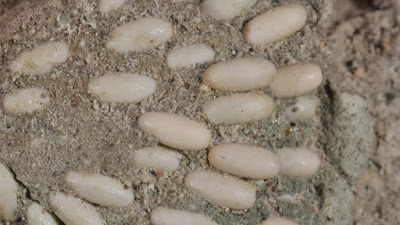Science is Fun Fridays!
29 million-year-old grasshopper eggs found in John Day Fossil Beds National Monument in Oregon.
They're called "ootheca," a type of egg capsule produced by stick insects, cockroaches, praying mantises, and grasshoppers.
Different species make their oothecae in different ways, creating a variety of egg pods.
Many grasshopper species lay their eggs by inserting their abdomen into the soil and making excretions that mix with the soil and then harden. The result is their eggs take on the shape of the surrounding soil.
Chris Stacey, Flickr





Comments
Post a Comment